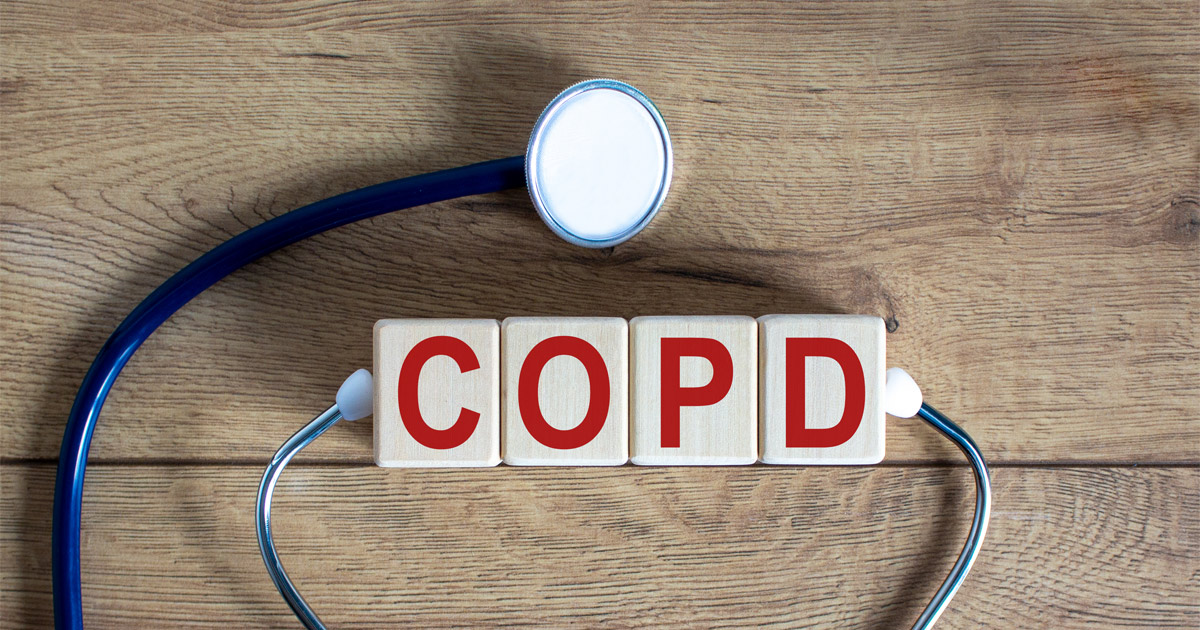
Chronic Obstructive Pulmonary Disease (COPD) is a term that encompasses many chronic lung conditions, including emphysema, chronic bronchitis, and irreversible asthma. COPD is deadly, and in the United States, it is the fourth leading cause of death after heart disease, cancer, and strokes. November is designated as National COPD Awareness Month, and the campaign’s purpose is to provide education about the disease and how to prevent it. While there are more than 11 million Americans living with COPD, it is estimated that there are many more who remain undiagnosed. Early detection of COPD is key to getting treatment that can slow its progression. There is no cure for COPD, and it cannot be reversed.
How Does COPD Affect the Lungs?
COPD describes different kinds of damage to the lungs. In the case of emphysema, the damage is to the alveoli or air sacs of the lungs. The walls of the air sacs lose their elasticity, causing the bronchioles or airways to the lungs to collapse, making it harder to inhale and exhale.
Chronic bronchitis also affects the bronchial tubes. The constant inflammation causes the lungs to produce excess mucus. The body responds by attempting to rid itself of the mucus with a persistent cough.
What Causes COPD?
All forms of COPD are caused by airborne irritants that are inhaled into the lungs. COPD can develop either from exposure to a small amount of an irritant over a long time period, or exposure to a large amount of an irritant for a short period of time. Common types of irritants include smoke, dust, fibers, chemicals, metals, fumes, and gases. The main cause of COPD is smoking, but non-smokers can also get it. Sometimes, a genetic condition called alpha-1 antitrypsin contributes to the development of COPD, but this is rare.
What are the Symptoms of COPD?
Recognizing the symptoms of COPD is important for getting a diagnosis. A diagnosis can be made through a simple non-invasive breath test that measures airflow in and out of the lungs.
Common symptoms of COPD include:
- Wheezing sounds
- Shortness of breath
- Tightness in the chest
- Persistent coughing
- Excess mucus or change in color or thickness of mucus
- Fatigue
- Frequent respiratory infections
Impacts of COPD on Daily Life and Work
Lungs damaged by COPD have difficulty sending oxygen to the other parts of the body, weakening blood circulation and muscle function. This leaves COPD patients constantly tired and short of breath. COPD also makes the body more susceptible to frequent infection, further complications, and diseases, such as lung cancer, heart disease, and depression.
Advanced COPD may make even simple daily tasks difficult and normal work duties impossible.
Who is at Risk?
Smoking and second-hand smoke are major factors. People who work in certain occupations are also at risk. Work environments with high concentrations of irritants associated with COPD include:
- Mining: Coal mining and gold mining produces harmful dust in areas that are difficult to ventilate.
- Granite Quarries: The removal of granite exposes workers to dust.
- Tunnel Work: The air quality in tunnels is difficult to control, exposing workers to dust and fumes from the equipment.
- Concrete and Brick Manufacturing: The production leads to irritants.
- Textile Manufacturing: Fibers and dust from textiles can be small enough to inhale during production.
- Welding: Dangerous fumes are produced during the welding process, putting workers at risk for COPD.
- Agriculture: Agricultural workers are exposed to both dust and dangerous chemicals used to grow crops.
- Plastic, Rubber, Leather, and Paper Manufacturing: These are just some of the industries that use toxic chemicals during production.
How can I Prevent COPD?
An employer has the responsibility to monitor and control the air quality in their workplace. The Occupational Safety and Health Administration (OSHA) has standards and regulations that apply to industrial processes to prevent work injuries and occupational illnesses. These safety standards include:
- Installing proper ventilation systems and industrial vacuums with hoods to reduce dust, vapors, and fumes in the workplace.
- Providing personal protective equipment (PPE), masks, and respirators.
- Training workers on the correct way to wear and use PPE.
- Washing and mopping floors instead of sweeping, which sends dust into the air where it can be inhaled.
- Maintaining equipment and machinery so that it stays as clean as possible.
- Reducing the use of open containers as much as possible.
Employers can also implement annual breath tests as a part of workplace safety programs. Regular tests measures lung function and can detect changes from year to year. Workplace vaccinations for flu and pneumococcal pneumonia can help reduce and prevent infections and maintain lung health.
COPD and Workers’ Compensation Benefits
A worker who develops an illness in the course of their employment is eligible for Workers’ Compensation benefits. COPD qualifies as an occupational illness if it can be shown that the cause is related to the worker’s occupation. It is important to know that when claiming benefits, the burden of proof falls upon the worker. For this reason, it is critical that a worker speaks to a lawyer after they suspect they have work-related COPD.
Pittsburgh Workers’ Compensation Lawyers at AlpernSchubert P.C. Advocate for Workers with Occupational Illnesses and Injuries
If you have work-related COPD or another occupational illness, our Pittsburgh Workers’ Compensation lawyers at AlpernSchubert P.C. can help. Proving a claim for an occupational illness can be difficult, but our lawyers have the knowledge and experience that you need for a successful claim. Call us at 412-765-1888 or contact us online for a free consultation. Located in Pittsburgh, we serve clients throughout western Pennsylvania, including Allegheny County, Lawrence County, and Washington County.
